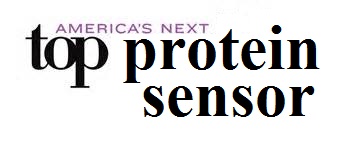Friday, July 10, 2015
By:
Welcome to Round 2: Atomic Force Microscopy (AFM)! In case you've never heard of if before an atomic force microscope consists of a lever arm that has an itsy bitsy teeny weeny (not yellow polka dot, sorry) tip on the underside that hovers just above the surface of a sample you want to measure. The Van der Waals forces between the atoms of the tip and those of the sample result in the tip maintaining a fixed distance from the sample surface. As the tip is moved over the sample it rises as falls with the nanoscale peaks and valleys on the sample surface, producing a topographical map of the sample. A laser beam is reflected off the top of the lever and as the lever moves up and down, the displacement of the laser beam changes and is detected. This technique will allow us to measure the thickness of the flakes on surface of the target substrate. Aaaaanyway, first we learned how to use the controller software to bend the AFM to our will. (Mwah Hah Hah!) The trick to mastering the AFM? Take good notes on how to use the software and once again, delicate hand movements to control the stage so as not to smash the tip into the sample. We practiced scanning a few flakes to get the hang of how the machine works and interpreting the data.
Tuesday we went on a tour the NASA campus. First we saw the lab where one of the SPS NASA interns has been simulating a new kind of foam that will be used to shield a satellite from infrared radiation to prevent it from overheating. After that we went to a science - fair thing where there were employees from various divisions of NASA doing demos or explaining their latest research. I was amazed at the fantastic variety of careers one could pursue at NASA. The coolest table was the Engineering and Applied Science table. I saw a miniature Stirling engine that turns a wheel without using any fuel!
Then we headed over to another building where we were able to see the bunny-suit-clad engineers building the James Webb telescope! It is going to be the replacement for the Hubble and it will be the largest telescope ever constructed! To collect the light from distant galaxies and supernovas it will use a bunch of mirrors put together in a honeycomb pattern to form one humongous mirror. We actually saw them loading one of the mirrors onto a giant crane hanging from the ceiling and lowering it down from the upper deck to the ground floor. Next we got to see some of the real test facilities that are being used to test spacecraft components to see if they'll survive the trauma of launch. One device blasts the mirror with a cacophony of sound of various frequencies. There was a shake-table that basically takes the mirror for a ride on one of those electric bull rides you see at fairs. If the mirror survives that it process it moves on to a chamber where the mirror is subjected to various temperature gradients. Next it was on to a tour of exhibits about the Hubble telescope and the various spacewalks that have taken place. It was really interesting to hear about how engineers had to invent new tools for astronauts to use to service Hubble and how those inventions have gone on to spark brilliant innovations in seemingly unrelated fields. It made me realize that space missions benefit society in ways that could not have been imagined beforehand.
Wednesday, Thursday , and Friday it was back to business with Project MOSFET.

We spent the days AFM-ing flakes to see which of them are likely to become

I felt like Goldilocks and the three MoS2 flakes...This one is too fat. This one is too thin. This one is too rough. This one is just right.
Teresa Turmanian
